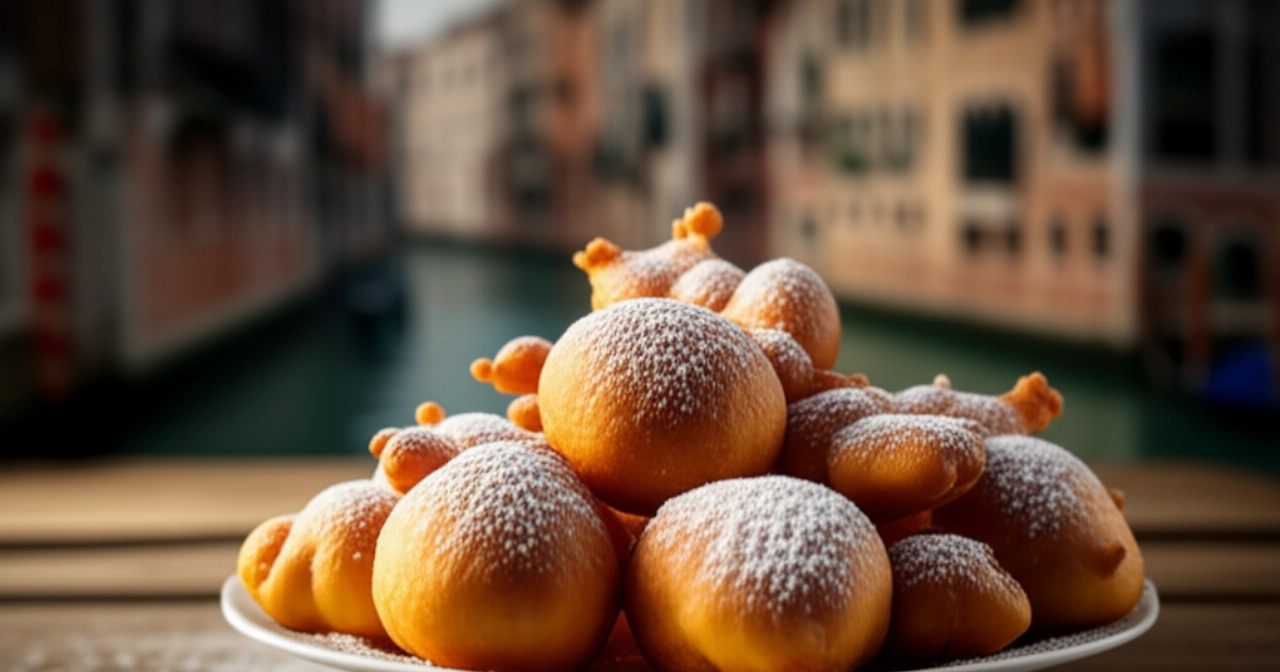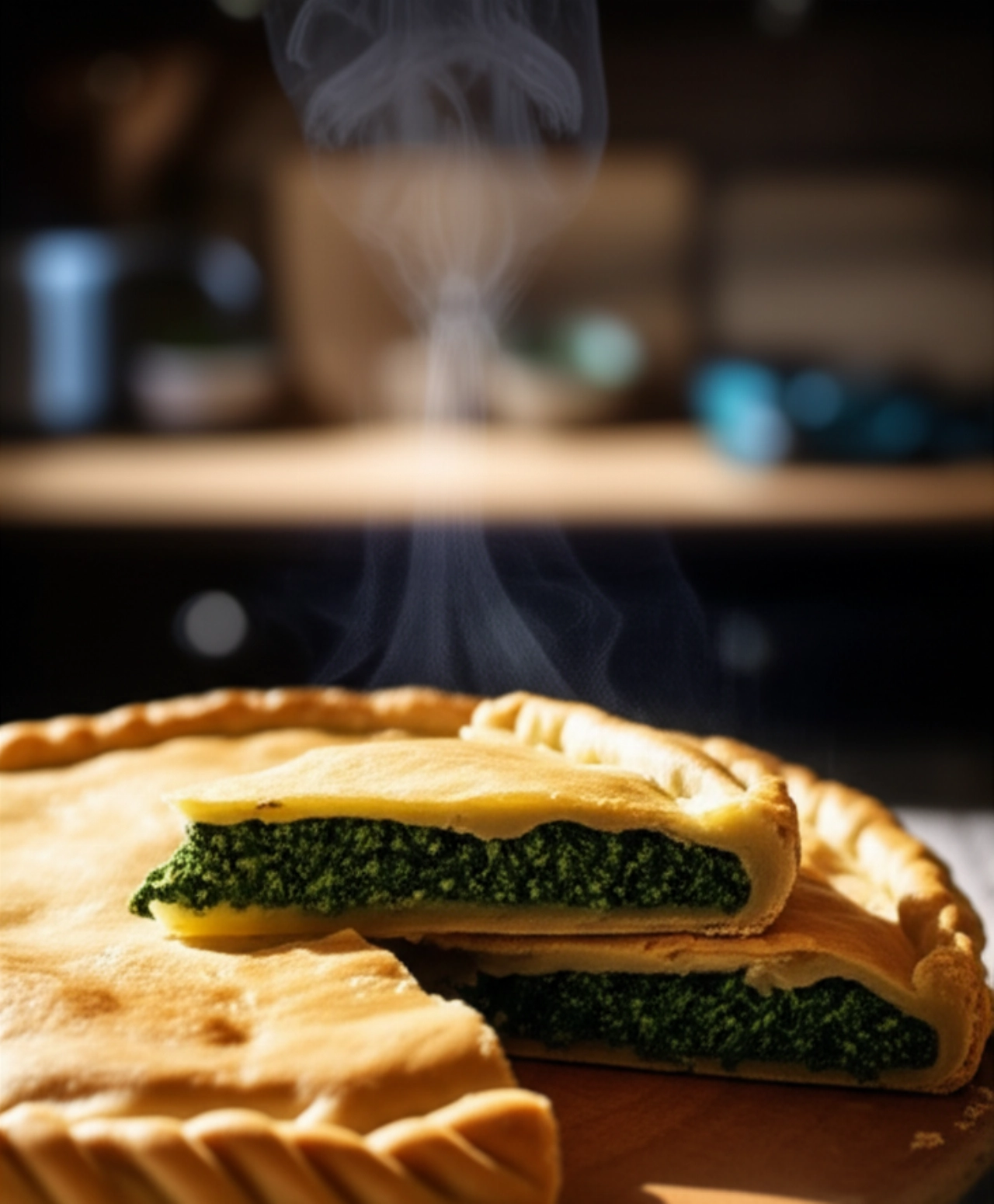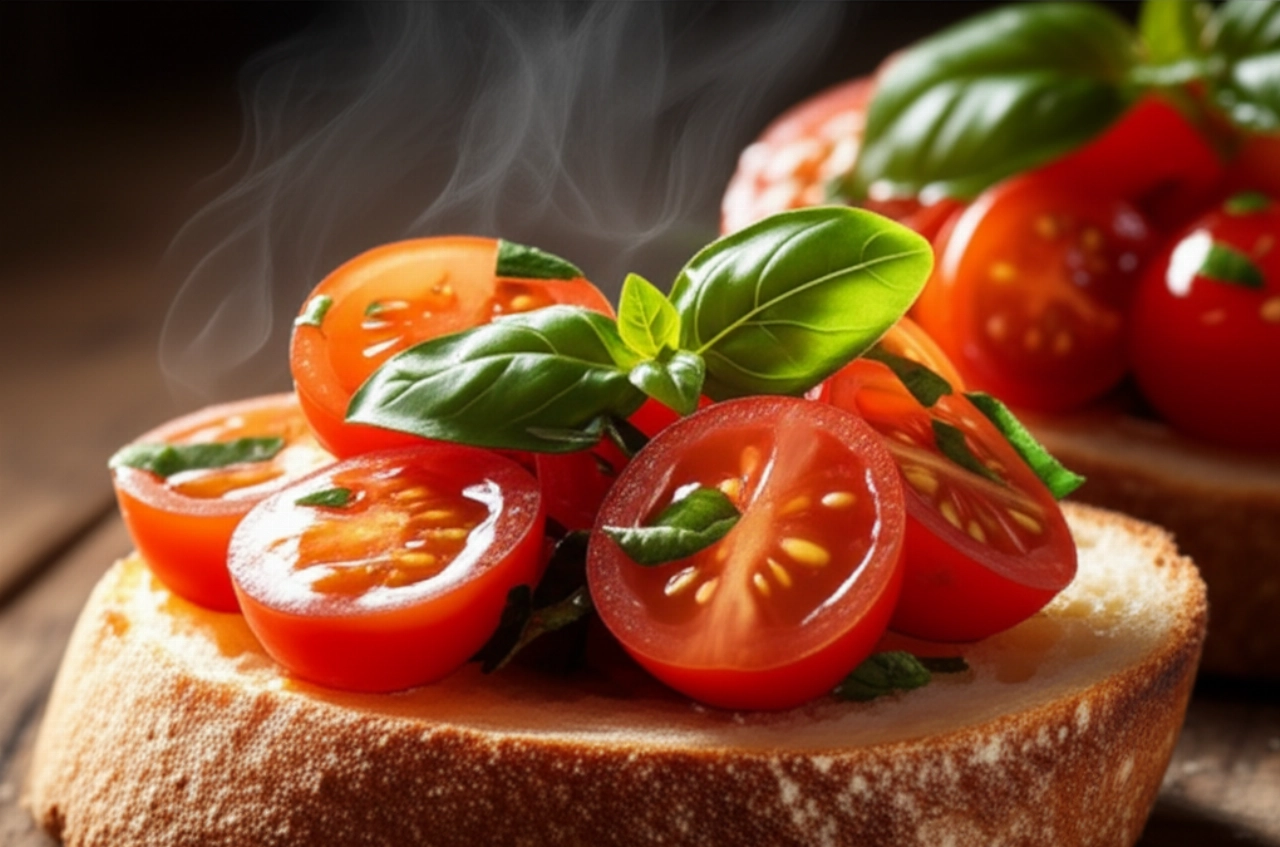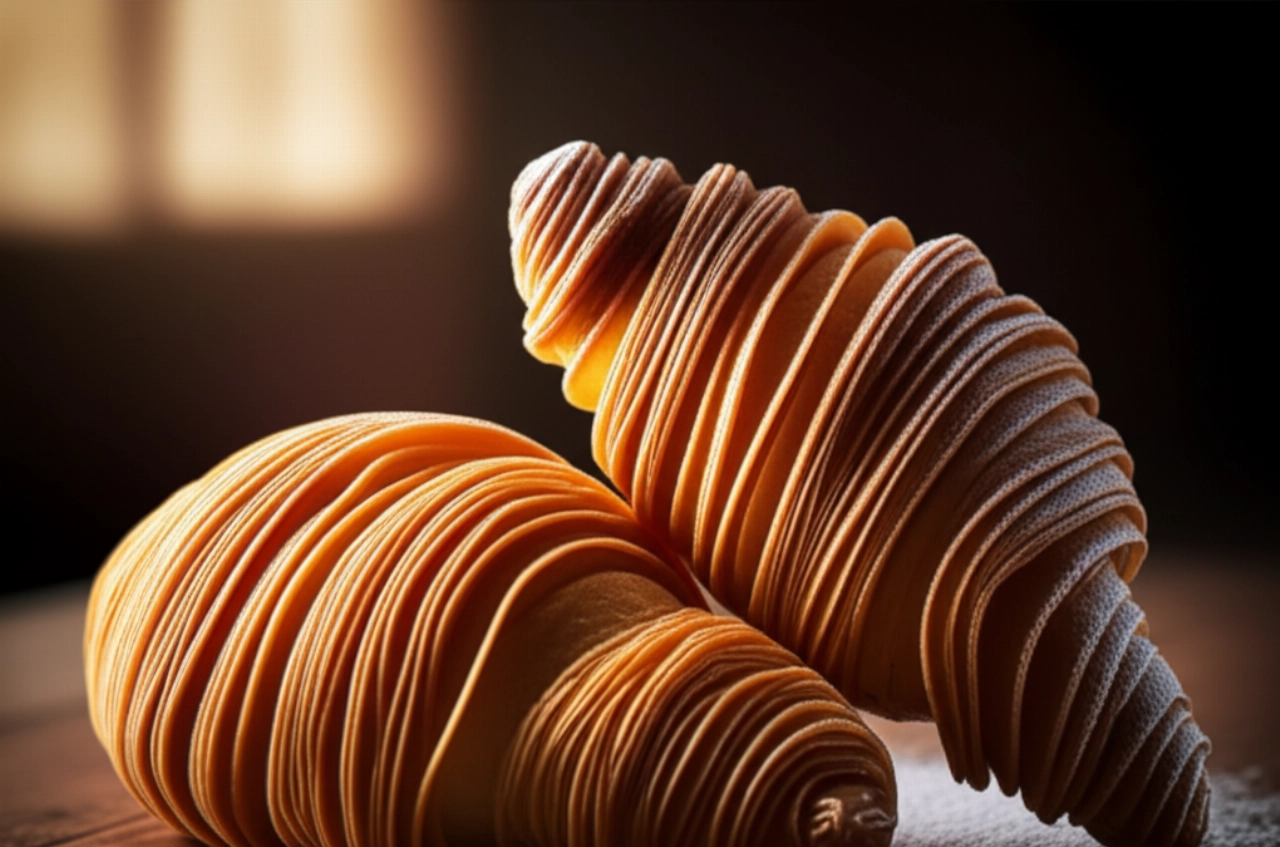Imagine a steaming platter of gnocco fritto, golden and puffed up like clouds, waiting to be filled with the most delicious cured meats. One bite and it melts in your mouth, leaving only the authentic taste of Emilia-Romagna, a true embrace of home.
But how many times have you tried to make it at home and ended up with a heavy, greasy, or non-rising dough? The fear of wasting precious ingredients and your time is real, and finding the 'true' recipe, the one that guarantees success, seems almost impossible.
Take a deep breath and get comfortable. Today, at Search Recipes, I won't just give you a list of ingredients, but I'll reveal all the secrets to preparing a Gnocco Fritto so perfect it will make the best trattoria envious. I guarantee a light, puffy, and golden result, crispy on the outside and incredibly soft on the inside, without a drop of grease. Get ready to receive applause and feel like a true guardian of Emilian cuisine!

Ingredients for a Dream Gnocco Fritto: The Choice That Makes the Difference
Every great dish starts with carefully chosen ingredients. Here's what you need and why:
- 00 Flour: Use good quality flour, with a medium W (around 200-220). It's the soul of your dough, and good flour ensures the right elasticity and optimal leavening.
- Fresh Brewer's Yeast: Always prefer fresh yeast; it's more active and will give your gnocco the softness and lightness you're looking for. If using dry yeast, remember to reactivate it in a little warm water before adding it.
- Warm Water: It should be just warm to the touch, not hot! Water that's too hot 'kills' the yeast, compromising the leavening. The right temperature activates it gently.
- Lard (or Light EVO Oil): Here lies one of the secrets to lightness and authentic flavor. Traditionally, lard is used in the dough for incredible softness and an unmistakable aroma. If you prefer, you can substitute it with a good extra virgin olive oil with a delicate flavor.
- Fine Salt: Don't overdo it, but don't forget it! Salt balances flavors and strengthens the gluten network, helping the dough retain air and puff up during cooking.
- Seed Oil for Frying: For frying, peanut or high-oleic sunflower seed oil is ideal. It has a high smoke point, which means it can reach high temperatures without burning and without altering the flavor of your gnocco fritto, ensuring a dry and crispy fry.

The 3 Mistakes That Make Gnocco Fritto Heavy and Greasy (and How to Avoid Them)
As your trusted chef, I want to protect you from the most common pitfalls. Avoiding these mistakes will guarantee you tremendous success:
-
Not Respecting Leavening Times: Haste is the enemy of gnocco fritto! Dough that hasn't risen enough will be dense, hard to digest, and won't puff up properly. Let it rest in its own time, in a warm place without drafts, until it doubles in volume. It's the first step to a gnocco as light as a feather.
-
Frying with Oil Not at the Right Temperature: This is the most common and insidious mistake! If the oil is too cold, the gnocco will absorb it like a sponge, becoming greasy and heavy. If it's too hot, it will burn on the outside while remaining raw inside. The ideal temperature is between 170°C and 180°C. My advice? Use a kitchen thermometer; it's a small investment that will save your recipe and give you certainty of the result!
-
Working the Dough Too Little (or Too Much): The dough should be smooth and elastic, but not sticky. Work it until it becomes homogeneous and detaches from your hands. Underworked dough won't develop a good gluten network, while overworked dough might become 'gummy'. Find the right balance; you'll feel the dough 'living' under your hands.
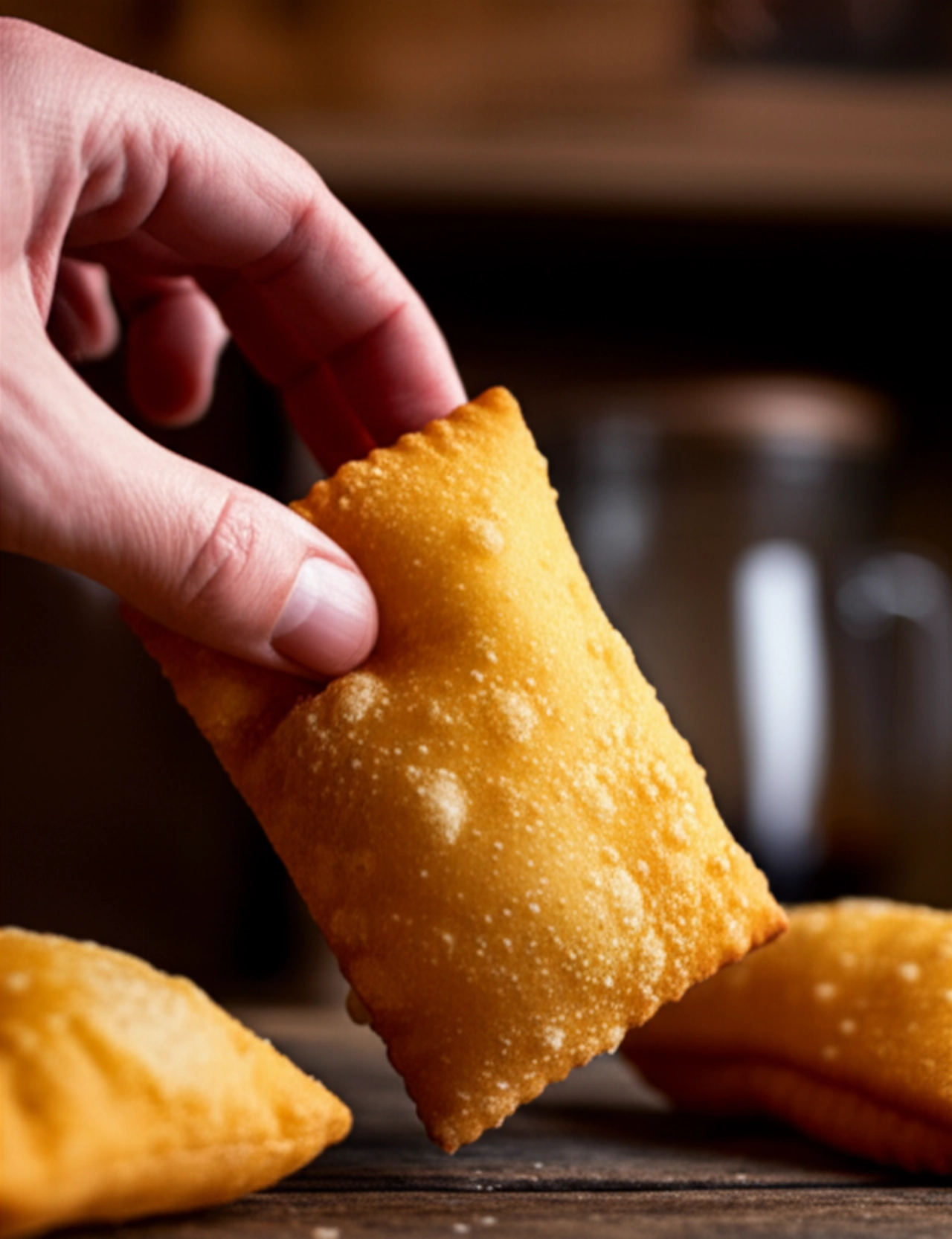
The Guardian's Secret: The Trick for Gnocco Fritto That 'Pops' When Cooked
I'll reveal a little secret I learned from an old Emilian innkeeper, a trick few know that makes the real difference between a good gnocco and an exceptional gnocco:
Once the dough is rolled out and cut, cover the pieces with a clean cloth and let them rest for another 10-15 minutes before frying. This very short 'second rise,' called proofing, allows the dough to relax and puff up even more during cooking, creating those air bubbles that make gnocco fritto so irresistible, light and crispy on the outside, incredibly soft on the inside. It's a step that will guarantee you a truly professional result!
Let's Prepare Gnocco Fritto Together: The Step-by-Step Guide for Guaranteed Success
Ingredients:
- 500g 00 flour (W 200-220)
- 10g fresh brewer's yeast (or 3.5g dry)
- 250ml warm water
- 20g lard (or 20ml light EVO oil)
- 10g fine salt
- Peanut or high-oleic sunflower seed oil for frying
Tools:
- Stand mixer or large bowl
- Plastic wrap
- Rolling pin
- Knife or pastry wheel
- Kitchen thermometer
- Slotted spoon
- Paper towels
Instructions:
-
Activate the yeast: In a small bowl, dissolve the brewer's yeast in warm water (remember, not hot!) with a pinch of sugar (optional, but helps the yeast get started). Let it rest for 5 minutes until a light foam forms on the surface: this is a sign that the yeast is alive and ready to work for you.
-
Prepare the dough: In a large bowl (or in a stand mixer with the hook attachment), pour in the flour. Add the water with the yeast and begin to knead. When the dough starts to come together, add the lard (or oil) at room temperature and the salt. Do not add salt directly to the yeast, it could inhibit it!
-
Knead the dough: Continue to knead vigorously for at least 10-15 minutes (if by hand) or 7-8 minutes (with a stand mixer) until the dough is smooth, elastic, and no longer sticks to the sides of the bowl. It should be soft but compact, a true ball of energy.
-
First rise: Form the dough into a ball, place it in a lightly oiled bowl, cover with plastic wrap and let it rise in a warm place (e.g., oven turned off with the light on) for at least 2 hours, or until it has doubled in volume. Don't rush, patience is your best friend here.
-
Roll and cut: Once risen, transfer the dough to a lightly floured surface. Roll it out with a rolling pin to a thin sheet about 2-3 mm thick. With a knife or a pastry wheel, cut the dough into diamonds or rectangles of about 5x7 cm. Be precise, but not obsessive!
-
Second rise (the secret!): Arrange the gnocco fritto pieces on a floured tray, cover them with a clean cloth and let them rest for another 10-15 minutes. This step is crucial for the final lightness and for those air bubbles we love so much!
-
Perfect frying: Heat abundant seed oil in a deep pan or a fryer. The ideal temperature is between 170°C and 180°C. If you don't have a thermometer, try immersing a small piece of dough: if it immediately floats to the surface and fries vigorously, the oil is ready.
-
Cook the gnocco: Fry a few pieces at a time to avoid lowering the oil temperature. Turn them often with a slotted spoon for even browning. It will take about 1-2 minutes per side. You'll see the magic, they'll puff up like balloons!
-
Drain and serve: As soon as they are puffed and golden, drain them with a slotted spoon and place them on paper towels to remove excess oil. Serve immediately, piping hot, accompanied by mixed cured meats, cheeses, or even a thin layer of jam for a sweet and surprising version.
Tips and Frequently Asked Questions About Gnocco Fritto
I've gathered the most common questions to give you even more confidence and make you feel at ease in the kitchen:
-
Can I prepare the dough in advance? Of course! You can prepare the dough the night before and let it rise slowly in the refrigerator overnight. In the morning, take it out of the fridge at least an hour before rolling and cutting it, to bring it back to room temperature and reactivate the yeast.
-
Why isn't my gnocco fritto puffing up? The most common causes are: inactive yeast (check the expiration date!), water too hot or too cold during activation, underworked dough that hasn't developed a good gluten network, or oil not at the right temperature during frying. Review these points next time!
-
Can I freeze gnocco fritto? Yes, but with a trick! Freeze the raw, already cut dough pieces, well-spaced on a tray. Once frozen and hardened, transfer them to a food bag. When ready to use, do not thaw them completely: fry them while still slightly frozen, increasing the cooking time slightly. They will still be delicious and fragrant!
-
What is the best oil for frying gnocco fritto? Peanut or high-oleic sunflower seed oil are the best. They have a high smoke point, which means they can be heated to high temperatures without burning and without releasing unpleasant flavors, ensuring a dry and crispy fry. Avoid olive oil for deep frying; it has a lower smoke point.
There you have it! Now you no longer just have a recipe, but all the secrets to bring to the table a Gnocco Fritto that tastes of celebration, tradition, and that Emilian generosity that makes you feel right at home. A light, puffy, and golden dish, perfect for any occasion, from brunch to dinner with friends.
Don't be afraid to challenge yourself. Cooking is a journey of discovery and creativity, and with this solid guide, your Gnocco Fritto will be a guaranteed success. Get ready to see your diners' eyes light up and hear 'Mamma mia, that's good!' echoing in the room.
Have you tried our recipe? We're so curious to see your masterpiece! Leave a comment below, tell us how it went, or share a photo on Instagram by tagging @CercaRicette.it. If you loved this Gnocco Fritto, you can't miss our recipe for Perfect Mixed Cured Meats or another Emilian delight like the Original Tigella. Your kitchen is our kingdom!

